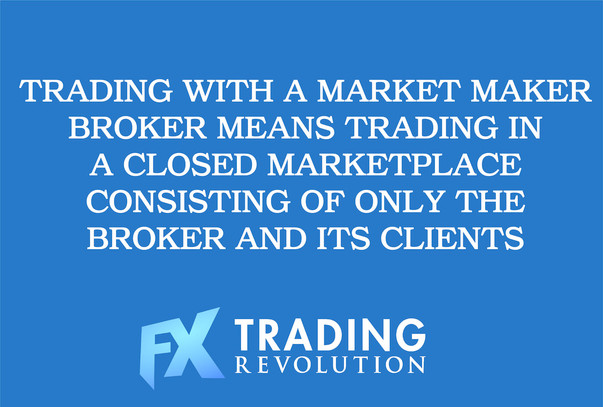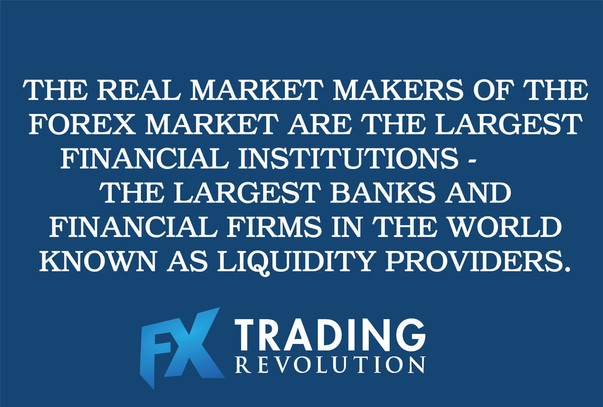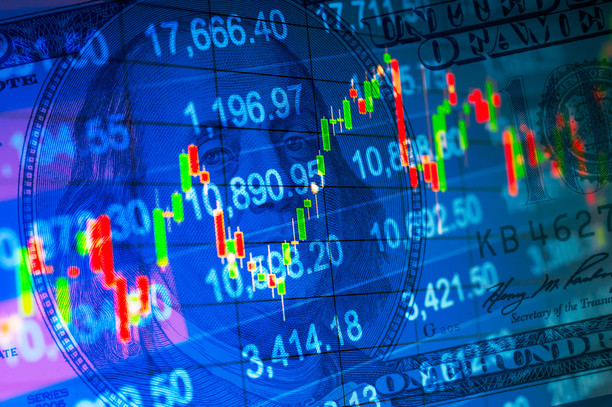A market maker is essentially a broker that “makes” the market – meaning they take the opposite side on the trades of their clients.
When a retail trader buys a currency pair, the market maker broker can sell that currency pair to the trader or match it with a sell order from another client.
If there are other buy orders from other clients then the broker can match the two orders in which case the two clients will trade against each other. However, if there are no opposing orders from other clients then the market maker broker will itself sell the currency pair to the trader.
This is by definition a conflict of interest situation because any money that the trader wins go out straight from the broker’s pocket and conversely, any money that the trader loses go directly into the broker’s pocket.
So, in this kind of a situation the broker clearly prefers that the client losses. This is why many traders believe that their brokers are working against them rather than helping them to make winning trades.
Most retail Forex brokers are market makers, although many of them claim otherwise. Normally, unless the broker is a true ECN or STP type it’s most likely a market maker of some form.
Forex Brokers - Market Makers vs ECN/STP
There are two main types of Forex brokers – Market Makers and ECN/STP brokers.
With market makers, as we discussed earlier, whenever a retail trader places a trade, the order doesn’t actually go out into the real Forex market.
Instead, trading with a market maker broker is a closed marketplace consisting of only the broker and its clients.
Orders can only be matched between these parties which obviously creates a rather illiquid and artificial market environment that only mirrors the real interbank Forex market but is not directly connected to it.

This is also the reason why most market maker Forex brokers tend to have higher spreads and generally worse trading conditions than ECN brokers.
With an ECN brokers, all clients’ trades go into the real Forex market – which are in fact the banks and big financial institutions.
In this case, the broker acts only as an intermediary, and all client orders are matched with orders of the liquidity providers in the interbank Forex market.
Hence, this is a much more liquid environment which enables far better order execution and more competitive pricing.
In essence, by trading with an ECN or STP broker, Forex traders get access to the real market compared to the artificial Forex market offered by market maker brokers.
Banks, Hedge Funds, and Large Institutions as Market Makers
The real market makers in the Forex market are the largest financial institutions – the largest banks and financial firms in the world - known as liquidity providers.
Mainly, the liquidity providers make profits on the transaction costs, since the primary business they are in is providing competitive ask and bid prices to traders and investors who want to buy or sell currencies.
Of course, aside from providing liquidity, these big players also trade the Forex market by speculating on price changes which is where the real conflict of interest in the Forex market arises.
However, since the interbank Forex market is so large a manipulation against one single party or trader simply can not occur.

In the next section, we discuss what kinds of manipulative tactics use both the retail market maker brokers and the big liquidity providers in the Forex market.
How Market Makers Manipulate the Forex Market
Retail market maker brokers and scams
Although many traders believe that brokers or market makers are working against them, that is not always necessarily the case.
Brokers facilitate order execution and provide the means necessary for traders to participate in the Forex market and to make their business profitable they charge spreads.
While there are some SCAM market maker brokers that do outright manipulation, like for example fake prices that are completely different from the real market, platform freezes or suddenly closed trades for unknown reasons, most of them use less obvious and less damaging tactics of manipulation.
ECN brokers, on the other hand, have no motivation to manipulate prices or work against their clients in any way because they never take the opposite side of the trade and they never win when their clients lose.
Manipulative tactics used by banks
The real manipulators of prices in the Forex market are the big players in the interbank market. It should be noted though that this is not necessarily an illegal practice.
In fact, what they are doing is perfectly legal most of the time as they are only using their power to move the market in a particular direction designed to provide them with an advantage.
Usually, the tactic is to trap traders and other market participants on the wrong side of the market so they – the big players can position their capital without moving the price much.
The market can move only when all the buy or sell orders at a particular price level have been exhausted. Since the big banks trade with huge volume, whenever they want to enter a trade they need to do it carefully or large price fluctuations may occur.
This is why they need a large number of counter orders on the other side to match their trades. And when there are not enough counter orders, they will use manipulative tactics to trick the crowd on the wrong side.
Essentially, they will purposefully move the market against the clear technical signals causing many fake breakouts with the intention to lure traders into believing it is a true breakout.
Once enough traders have been trapped, they start entering the market with their real intentions at much better prices which usually ends up causing a quick reversal of the fake move.





